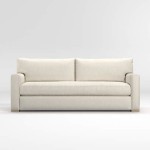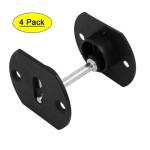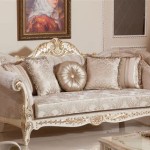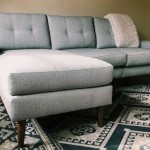Most Comfortable Sofas for Seniors: A Comprehensive Guide
Selecting a sofa that prioritizes comfort and support is crucial for seniors. As individuals age, physical needs and limitations can evolve, making the choice of furniture, particularly seating, a significant factor in maintaining well-being and independence. This article provides a detailed exploration of the key considerations and features that contribute to a comfortable and supportive sofa for seniors.
Key Considerations for Senior-Friendly Sofas
When selecting a sofa for a senior, several factors should be carefully evaluated. These factors encompass seat height, depth, back support, armrests, and material. Ignoring these elements can lead to discomfort, difficulty getting in and out of the sofa, and potential exacerbation of existing health conditions.
Seat Height: A comfortable seat height is paramount for ease of use. Sofas with seats that are too low can make it difficult for seniors to stand up, potentially increasing the risk of falls. Conversely, seats that are too high may lead to instability when sitting down. The ideal seat height generally ranges from 17 to 20 inches, allowing the user to place their feet flat on the floor with their knees at a comfortable 90-degree angle. It is prudent to consider the senior's individual height and mobility when determining the appropriate seat height.
Seat Depth: The depth of the seat influences posture and support. A seat that is too deep can cause seniors to slouch or struggle to reach the backrest, leading to back pain and discomfort. A shallower seat, on the other hand, may not provide adequate thigh support. The ideal seat depth is typically between 20 and 23 inches. This depth allows for comfortable seating without requiring excessive effort to maintain a good posture. Measurements should be taken, if possible, from the back of the knee to the base of the spine when seated to determine the most appropriate depth.
Back Support: Adequate back support is critical for maintaining spinal alignment and reducing back pain. Sofas with high backs that provide lumbar support are generally preferred. The backrest should adequately support the natural curvature of the spine, preventing slouching and promoting proper posture. Models with firm cushions and built-in lumbar support features are highly beneficial. Additional lumbar pillows can also be used to customize the support provided based on individual needs.
Armrests: Armrests offer support when sitting down and standing up, making them a crucial feature for senior-friendly sofas. The height and width of the armrests should be considered. Armrests that are too low may not provide adequate leverage for standing, while those that are too wide can be uncomfortable. Sturdy, wide armrests that are approximately 6 to 9 inches above the seat are generally recommended. These armrests provide a stable surface for pushing off when rising from a seated position.
Material: The choice of material can significantly impact comfort and ease of maintenance. Soft, breathable fabrics like cotton or linen are often preferred for their comfort and temperature regulation. However, these materials can be more susceptible to stains and require more frequent cleaning. Microfiber is a durable and stain-resistant option that is also soft and comfortable. Leather is another durable option that is easy to clean but can be more expensive. When selecting a material, it is important to consider both comfort and practicality, taking into account the senior's lifestyle and potential for spills or accidents.
Types of Sofas Suitable for Seniors
Several types of sofas are particularly well-suited for seniors, considering their specific needs and limitations. These include lift chairs, recliners, and sofas with specific design features that promote comfort and ease of use.
Lift Chairs: Lift chairs are specifically designed to assist individuals with mobility issues. These chairs feature a motorized lifting mechanism that gently raises the user to a standing position, reducing strain on joints and muscles. Lift chairs are particularly beneficial for seniors with arthritis, hip or knee problems, or other conditions that make it difficult to stand up from a seated position. They typically come with various features, such as adjustable recline positions, heat and massage options, and remote control operation. When selecting a lift chair, it is important to consider the weight capacity, the range of motion, and the ease of use of the controls.
Recliners: Recliners provide adjustable support and comfort, allowing users to recline to various positions. Reclining can help alleviate pressure on the spine, reduce swelling in the legs, and promote relaxation. Power recliners offer the convenience of motorized operation, making it easier for seniors to adjust the chair's position without straining. Manual recliners require more physical effort to operate and may not be suitable for individuals with limited strength or mobility. When choosing a recliner, it is important to consider the range of recline, the comfort of the cushioning, and the ease of operation.
Sofas with Specific Design Features: Certain sofa designs incorporate features that make them more senior-friendly. These include sofas with high backs, firm cushions, and sturdy armrests. Sofas with a minimalist design and clean lines can also be easier to navigate around, reducing the risk of tripping or falling. Modular sofas, which consist of individual sections that can be arranged in various configurations, offer flexibility and customization. These sofas can be adapted to meet the changing needs of the user. When considering sofas with specific design features, it is important to prioritize functionality, comfort, and safety.
Additional Considerations for Comfort and Safety
Beyond the core features of the sofa, several additional factors contribute to comfort and safety. These include the firmness of the cushions, the quality of the frame, and the accessibility of the sofa's placement within the living space.
Cushion Firmness: The firmness of the cushions plays a significant role in comfort and support. Cushions that are too soft can lead to sinking and difficulty getting up, while cushions that are too firm may be uncomfortable. Medium-firm cushions typically offer the best balance of support and comfort. These cushions provide adequate support for the spine and joints without being overly rigid. When assessing cushion firmness, it is important to sit on the sofa for an extended period to determine its long-term comfort.
Frame Quality: The quality of the sofa frame is crucial for its durability and stability. A sturdy frame ensures that the sofa will withstand regular use and provide reliable support. Hardwood frames, such as oak or maple, are generally considered to be the most durable. These frames are resistant to warping and cracking, ensuring long-term stability. Metal frames are also a viable option, offering strength and durability. When evaluating frame quality, it is important to inspect the joints and connections to ensure that they are securely fastened.
Placement and Accessibility: The placement of the sofa within the living space can significantly impact its accessibility and safety. The sofa should be positioned in a well-lit area, away from obstacles that could pose a tripping hazard. It should also be placed close to a stable surface, such as a coffee table or end table, that can be used for support when getting up. Adequate space should be provided around the sofa to allow for easy maneuvering and access. Consider also the proximity of the sofa to doorways and walkways to ensure clear and unobstructed pathways.
Maintenance and Cleaning: Ease of maintenance is paramount, especially for seniors who may have difficulty with strenuous cleaning tasks. Sofas with removable cushion covers that can be machine-washed or dry-cleaned are ideal. Stain-resistant fabrics can also help minimize the need for frequent cleaning. Regular vacuuming and spot-cleaning can help maintain the appearance and hygiene of the sofa. It is also important to follow the manufacturer's instructions for cleaning and maintenance to prevent damage to the upholstery or frame.
Customization Options: Many manufacturers offer customization options that allow buyers to tailor the sofa to their specific needs and preferences. These options may include choosing the fabric, cushion firmness, armrest style, and leg height. Customization can ensure that the sofa is perfectly suited to the senior's individual requirements and preferences. This level of personalization can significantly enhance comfort and satisfaction.
In conclusion, selecting the most comfortable sofa for seniors requires careful consideration of various factors, including seat height, depth, back support, armrests, material, and overall design. Prioritizing these elements can significantly enhance comfort, safety, and independence for seniors, promoting their well-being and quality of life. By thoroughly evaluating these considerations and exploring the available options, individuals can make informed decisions that meet the specific needs and preferences of the senior in question.

15 Most Comfortable Couches Of 2024

The 16 Most Comfortable Couches 2024 Tested By Interior Designers And Editors

15 Most Comfortable Couches Of 2024

The Most Comfortable Couch Ever

15 Most Comfortable Couches Of 2024

The 20 Most Comfortable Sofas Of 2024 Purewow

The 20 Most Comfortable Sofas Of 2024 Purewow

30 Sofas Made For Hours Of Lounging

15 Most Comfortable Couches Of 2024

The Best Most Comfortable Sofas To In 2024 Pit Sectional Sofa Modular Couch








